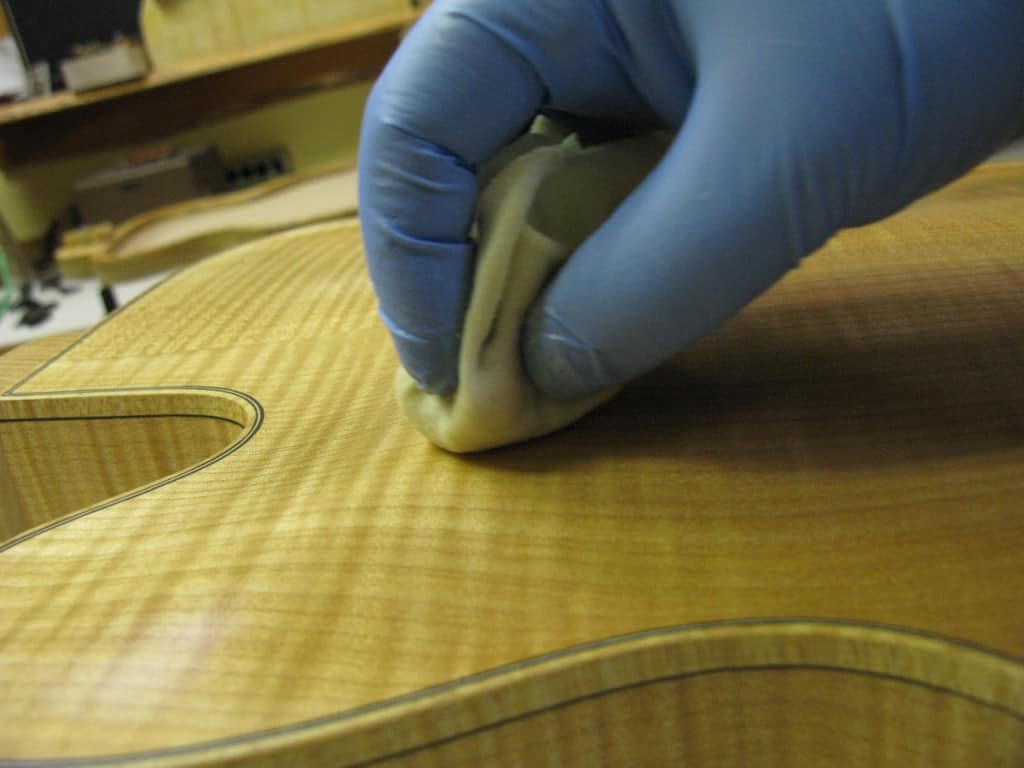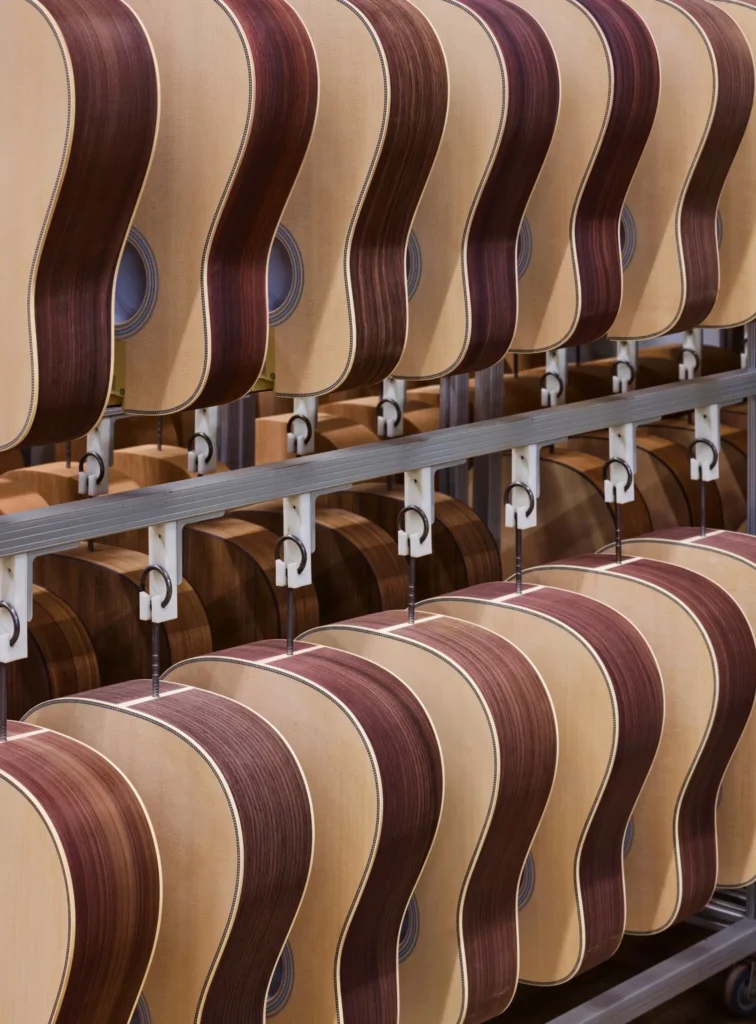The History of the Les Paul “Burst” Finish
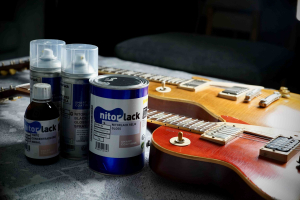
Origin and Evolution to the Present Day
When we think or hear about vintage Gibson colours, the first type of finish that comes to mind are the “Sunburst” tones.
It all started in 1958 with the launch of the Les Paul Cherry Sunburst. From that moment on, sales of this finish on Les Paul guitars began to grow, becoming increasingly popular.
In recent decades, Gibson has recognized the success of that original “Cherry Burst” and, more specifically, the effect of its fading over the years. As a result, they decided to recreate all these fading stages in different colours, leading to the tones we will discuss later.
All these tones are also characterized by the natural degradation they undergo over time, which gives them a special charm.
Since they are vintage models designed to highlight the beauty of the old, a layer of “relic” or “Golden Age” varnish is often applied to achieve the characteristic checking of a guitar from that era.
At Nitorlack, as experts in all types of guitar colours and finishes, we are finalizing the development of all these colours, with the aim of making it easier for all our customers to recreate this type of guitar, in a simple way.
But we’ll tell you more about that later; first, let’s talk about the history and origin of the “sunburst” movement.
What is the true history of this type of guitar? When did they emerge?
This Burst finish began to gain popularity in 1958 with its introduction. The reason for its emergence was to counteract the significant decrease in sales of Goldtops from 1955 to 1957. In 1958, Gibson introduced the Les Paul Cherry Sunburst.
To revive the Les Paul market, the obvious solution seemed to be to return to the tradition of Sunburst finishes for which the Kalamazoo company was famous, showcasing the beautiful maple tops with a transparent finish.
On February 21, 1958, the Gibson ledger recorded an “LP Cherry Red 8 1689,” with a completely red top and a three-piece top. On February 25, there was a record of a Les Paul Sunburst, number 8 1641, with a number preceding the first one. This Les Paul had the classic “Tobacco” finish but had been completely repainted in Cherry. However, over the years, the red began to fade, revealing an asymmetrical top with the original finish.
Finally, on May 28, the Gibson ledger showed guitars with reference numbers 8 3097 and 8 3096, featuring the famous Cherry Sunburst finish.
All new Les Paul guitars, often nicknamed “Burst” by guitarists, had a unique top made of two symmetrical parts, obtained by cutting a maple board in half and opening it like a book (quartersawn).
The official colour of the top was Cherry Sunburst, but there could be slight variations in the colours. The same shade of red was not always used, and a much darker shade was applied when there were tops with imperfections to cover those small defects, resulting in a finish known as Darkburst.
Most of the different Burst tones we admire today are the result of the fading of the red colour when exposed to ultraviolet rays, a phenomenon known as “fading”. This effect is especially noticeable in 1959 models and the early 1960 Bursts, along with the yellowing of the clear coat. The consequence was the emergence of all those tones we now know by various names: Tobacco, Tea, Honey or Dirty Lemon, etc.
The effect was so pronounced that Gibson sold Les Paul guitars with a recommendation for dealers, reminding them not to expose the instruments to direct sunlight: “To preserve the delicate colouring of this beautiful instrument, avoid displaying it in shop windows where it is subject to direct or excessive sunlight.”
What are the main colours that show the natural degradation process of these Gibson colours?
Below is a brief description of the tones generated from the degradation of the original colour. These colours accurately replicate all stages of fading on a Burst guitar, and have been reproduced by Gibson and its Custom Shop.
Cherry Sunburst:
This has an intense red colour, the original shade with which the guitar left the factory. There are two types of Cherry: the ’58-’59 version and the one produced from 1960 onwards, which used a more wear-resistant product (often referred to as “Tomato Soup”).
A distinguishing feature of the original Cherry is its high sensitivity to ultraviolet light, which causes a rapid loss of intensity outdoors or under strong spotlights.
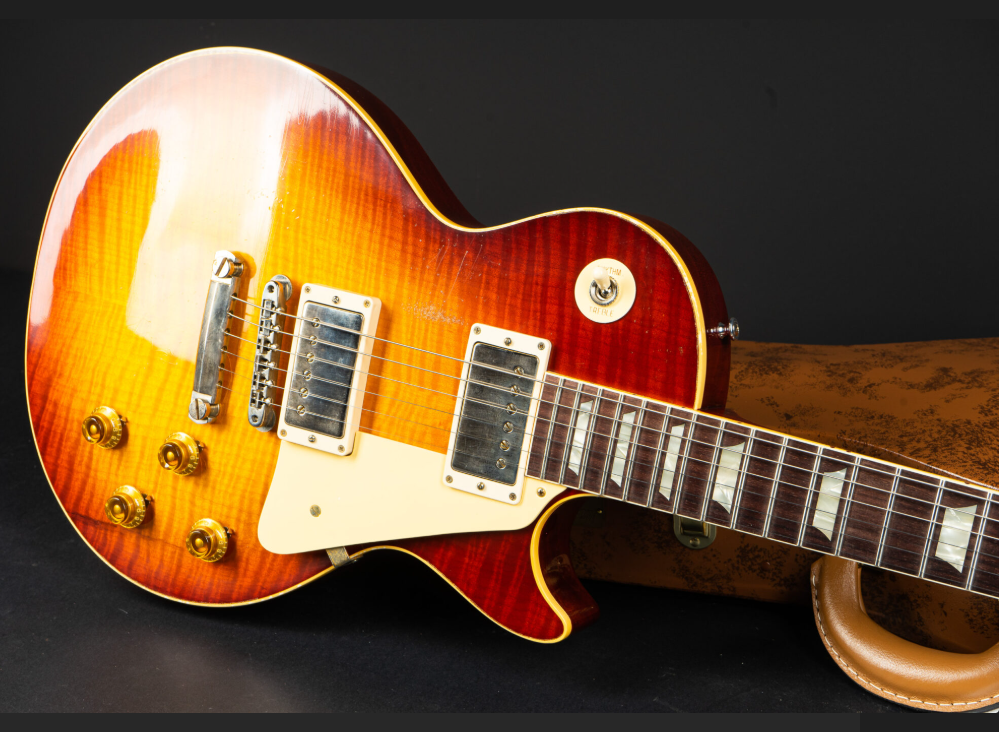
Ice Tea Burst:
This is the first stage of degradation of the original colour, where the red hue is slightly lost and it becomes a brownish shading with hints of the original red still present. Most guitars existing today fall within this range.
The name “Ice Tea” doesn’t appear in original Gibson catalogues; instead, it was coined decades later by collectors to describe that intermediate tone formed by the dyes’ reaction to natural ageing.
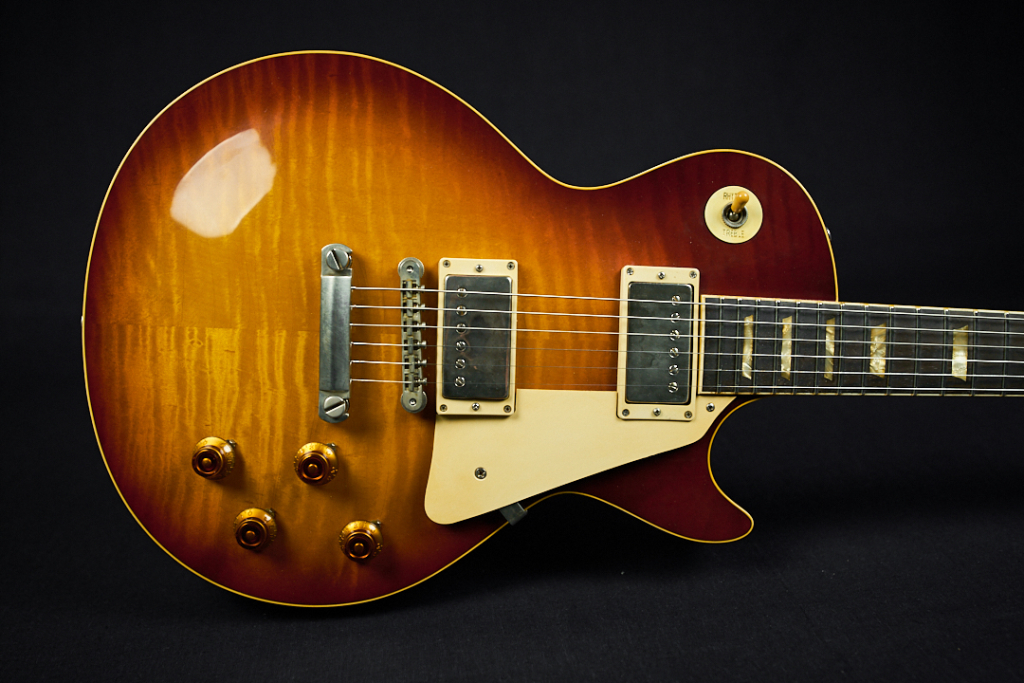
Honey Burst:
This is the next stage of fading after the Teaburst. The reddish-brown hue continues to disappear, giving way to a light orange tone. Very little of the original sunburst remains.
Some examples show more visible flame maple grain in this state, as the lighter colour of the finish allows for greater appreciation of the wood’s natural pattern.

Lemon Drop:
At this stage, very little of the original sunburst remains, and the guitar is almost completely yellow. Occasionally, a greenish tint appears, also known as Dirty Lemon.
The yellow dye in this phase tends to oxidize over time, generating a slight greenish hue on the edges that has been widely imitated in relicing processes.
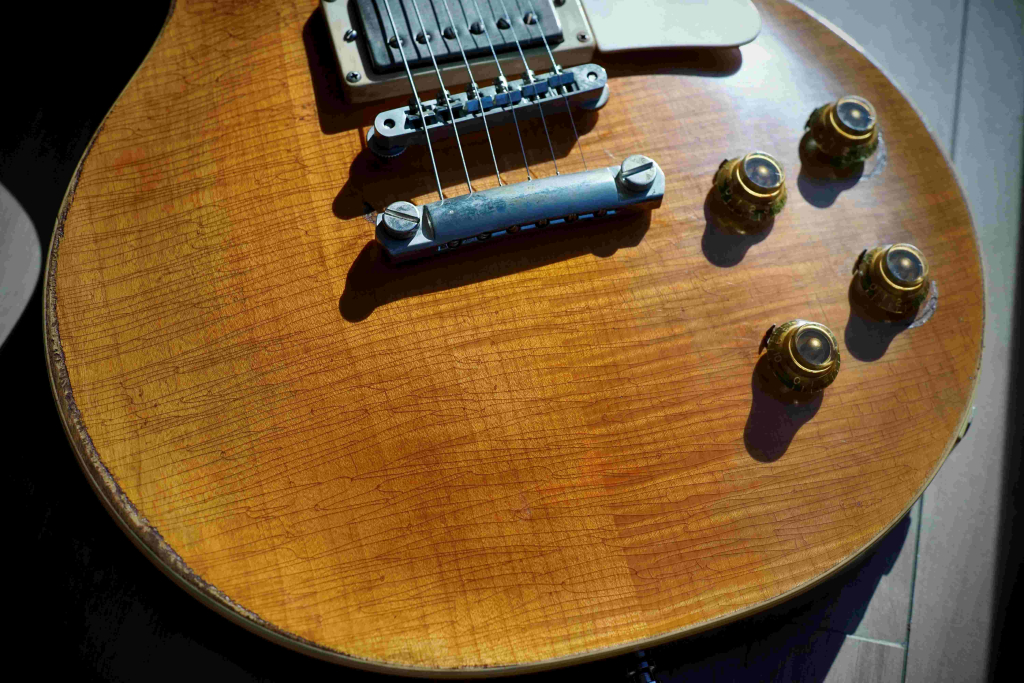
Tobacco Burst and Bourbon Burst:
Some Gibson guitars with flaws in the top were painted with an intense wine red colour that we call Bourbon Burst.
Like the Cherry Sunburst, this colour’s red degraded, leading to the Tobacco Burst, which is the result of that degradation, offering a more brownish tone.
The Tobacco Burst was inspired by previous finishes such as the 1950s “Sunburst” on acoustic guitars, and its combination of dark browns and blacks simulated the burnt look of a tobacco leaf.
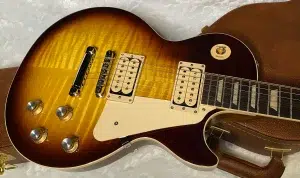
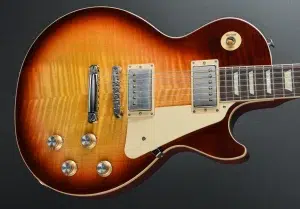
In early 1960, to counteract the red fading, Gibson experimented with a new red dye, also known as “Tomato Soup,” which faded much less but ultimately developed an orange tone that was not well-received by collectors. However, it’s possible to find some custom-made Les Paul Standard models with completely different finishes, such as Bob Summers’ (Mary Ford’s brother) Green Sunburst, Al Hendrickson’s All-Cherry, or others in Natural or Black finishes.
The Structure of the Classic Sunburst:
The Gibson Burst has always been applied over a maple base, a wood with a tone ranging from white to toasted yellow. This wood can darken over time, making the guitar’s toasted tone more pronounced.
The yellow base of the Gibson Burst is formulated with nitrocellulose and a yellow dye. This dye plays a crucial role in the finish, as it has much greater resistance to fading than the red.
The application of the red dye over the yellow base creates a sunset-like effect. This application was done by hand by Gibson workers, so each guitar is slightly different in the intensity and size of the burst.
At Nitorlack, we have developed this range of Burst colours in our technical laboratory, in collaboration with Dr. Nitro (8bombcustom), an expert in this type of vintage finishes and also our client. Some of the guitars featured in this article were made and photographed by our client Rodrigo Campos (Guitarras_rockcp) and also by Dr. Nitro.
At Nitorlack, our goal was not only to design a product, but a complete process to achieve the exact colour, from the yellow base to the burst and the aged amber finish.
Very soon, we will present the products and offer you a complete tutorial with which you can obtain a guitar with a tone similar to the iconic Gibson guitars of the 1950s and 60s.

